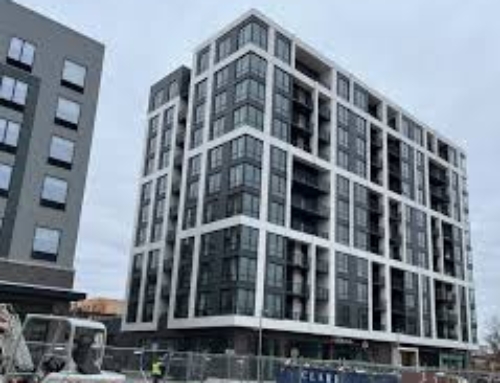An Architecture for American Peacebuilding

Last week, two of my AfP colleagues and I joined about 70 other people at George Mason University’s Point of View retreat center to take the first steps toward building what we are calling an “architecture for peace” in the United States. The conference was run held using strict Chatham House rules, so I can’t talk much about the specifics of what took place. I can however, talk about
- What we mean by an architecture for peace
- Some concrete steps we have already taken and others whose next steps will follow soon and will be discussed in future blog posts
I first began thinking of the importance of workshops like this when I attended the launch of Douglas Irvin-Erickson’s biography of Raphael Lemkin at the time of Donald Trump’s inauguration. During the course of the discussion, Doug mentioned architectures or institutions and policies that a number of governments had created to prevent the repetition of genocides and other mass atrocities they had experienced.
Needless to say, my thoughts immediately turned to the United States and the threatening times we were moving into. So, after the formal talk ended, I spoke with Doug about creating a grass-roots based one in the United States. To make a long story short, my wife and I began sitting in on his graduate seminar and we began thinking about what such a bottom-up architecture would be like and how it could amplify peacebuilding efforts that were already underway here. To make that long story short again, a foundation grant allowed The School for Conflict Analysis and Resolution to bring people from the anti-genocide and peacebuilding communities together for this off the record discussion.
 You’ll have to take my word for it, but it was an amazing event. Doug and two of his colleagues from GMU split us into three working groups after an initial discussion of peacebuilding efforts in the United States. One of panelists who teaches at a seminary noted that he hadn’t thought of himself as a peacebuilder until he sat down to prepare his remarks. Another talked about efforts Peace Direct has made to “map” existing peacebuilding initiatives in the United States. Others spoke of efforts to bring left and right together. Still others discussed the way peace building could and should find an echo at historically black colleges and universities and in tribal colleges and universities. Last but by no means least, presenters discussed ways we can use memorials and other symbols as tools for reconciliation—and not just as we explore the renaming of schools, street names, and the like that depict confederate heroes.
You’ll have to take my word for it, but it was an amazing event. Doug and two of his colleagues from GMU split us into three working groups after an initial discussion of peacebuilding efforts in the United States. One of panelists who teaches at a seminary noted that he hadn’t thought of himself as a peacebuilder until he sat down to prepare his remarks. Another talked about efforts Peace Direct has made to “map” existing peacebuilding initiatives in the United States. Others spoke of efforts to bring left and right together. Still others discussed the way peace building could and should find an echo at historically black colleges and universities and in tribal colleges and universities. Last but by no means least, presenters discussed ways we can use memorials and other symbols as tools for reconciliation—and not just as we explore the renaming of schools, street names, and the like that depict confederate heroes.
As I noted earlier, I can’t talk about the specifics of our discussions or the conclusions we reached, although I will do so in later issues of this blog as our plans formalize and can be made public. Nonetheless, without breaking Chatham House rules, I can mention a number of concrete steps we agree to take toward building that kind of an architecture in ways that could be replicated:
- We will begin working in selected communities that surfaced in the mapping exercise, including one middle western community where a group of visiting Somali peacebuilders met on Friday with peacebuilders working with Somali immigrants.
- We will begin coordinating efforts to link museums’ outreach work with local peacebuilders in a major American city.
- A few of us decided to help our colleagues create peace and conflict studies programs at historically black and native American colleges and universities.
- Teams formed at the retreat that are already formulating initiatives dealing with immigration, mass incarceration, and other “hot button” issues that could lead to more division and violence.
- Others are looking at ways of using ongoing “bridge building” efforts not just to bring left and right together but to do so in a way that could catalyze policy change and address the structural or underlying causes of conflict.
- To our surprise, another team has decided to convene members of the peacebuilding and technology communities to develop concrete ICT tools that can supplement the ones that already exist and amplify the impact of the kinds of organizations who attended the workshop.
- Last but by no means least, we will all add resources to the page on the AfP website that lists resources that American peacebuilders can use.
In the end, this was one of the most amazing three days I’ve ever spent. I worked with people I would have never met otherwise. Lasting friendships were made. We didn’t always agree, but we disagreed with smiles on our faces and learned from each other.
As my friends on the new left were chanting literally fifty years ago in the streets of Paris, Ce n’est qu’un début. Continuons le combat. This is just the beginning. Continue the struggle.
The views and opinions expressed in this article are those of the author and do not necessarily reflect the official policy or position of the Alliance for Peacebuilding or its members.
Also published on Medium.





